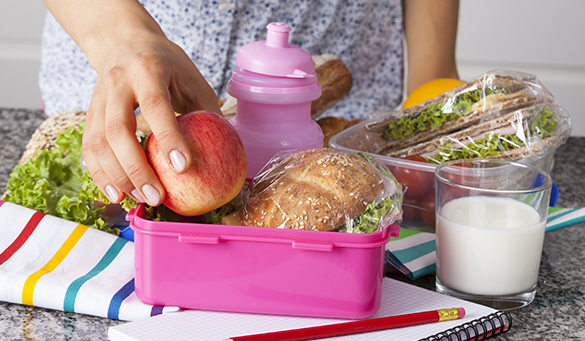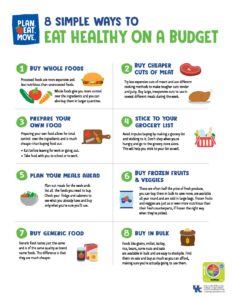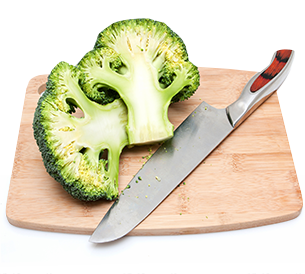Eating Healthy on a Budget
The great thing about eating healthy is that it can save you money while you do it…and who doesn’t love that?

As you begin your journey to healthier eating, remember that every family is different. What works for one family, may not work for another. What matters is what works for yours. Finding healthier eating solutions that fit your family’s routine and preferences will lead to healthy habits that last into the future.
Keep in mind that the change to healthier eating and saving money doesn’t happen overnight. Be kind to yourself as you learn your new habits. Keeping meals simple as you begin will help. Healthy and creative meals don’t have to be complicated. A simpler menu will usually cost less money and will be easier to prepare in the end.
We’ve pulled together a bunch of tips on how to eat healthy on a budget to help you get started. Which ones work for you and your family?
Great tips for eating healthy on a budget
Cook at home. Not only is it usually healthier, it costs less than eating out. For more, be sure to visit Cooking Basics & Tips.
Stretch recipes by adding ingredients. Get more servings out of your favorite recipes! Add rice to soups or stews, frozen vegetables to favorite pasta dishes, or beans to burgers to serve more meals.
Use leftovers in new ways. For example, try leftover chicken in a stir-fry or over a garden salad, or make chicken chili. Remember, throwing away food is throwing away your money!
Eat whole grains more often. Choose whole grains like brown rice and whole-grain pastas and breads more often. Foods, such as whole grains, with a high-fiber content can help give you a feeling of fullness and also provide key nutrients. Buy regular rice, non-flavored oatmeal and grits instead of instant to save on money, sugar, and calories. For more on nutrition, visit Nutrition Basics.
Replace meat with other proteins. Try replacing meat once or twice a week – or more – with beans, legumes, eggs, or fish. These are all nutritious sources of protein that cost less and are easy to prepare. Beans and peas cost far less than a similar amount of other animal protein foods.
Limit junk food. Junk foods have a long list of ingredients that are hard to pronounce. They may seem cheap, but offer little to no nutritional value, which leaves you wanting to eat more, and as a result, you spend more.
Drink water. Sip water to help maintain a healthy weight. Keep a water bottle in your bag or at your desk to satisfy your thirst throughout the day. Not only is it a good beverage for you, it’s free!
Plan your meals and stick to your grocery list. Know what you are going to buy before you head to the store. For more, visit Tips to Saving Money at the Grocery Store.
Don’t go to the grocery store when you are hungry. If you do, you will be more tempted to over-buy and buy foods that aren’t good for you.
Buy from the edges/sides of the grocery store first. This is where healthier whole foods can be found. More processed and less healthy food is located in the inner aisles of the store.
Save money when eating out by getting the early bird special, going out for lunch instead of dinner, or looking for “2-for-1” deals. Choose healthier options such as baked chicken instead of fried chicken.
Pack your lunch. It’s healthier – and costs less – to bring your lunch to school or work!
Grocery Budget Calculator. Create a grocery budget. Try our Grocery Budget Calculator tool to help figure the cost for your family to eat a nutritious diet that meets current Dietary Guidelines for America using the United States Department of Agriculture’s (USDA) Low-cost Food Plan.


